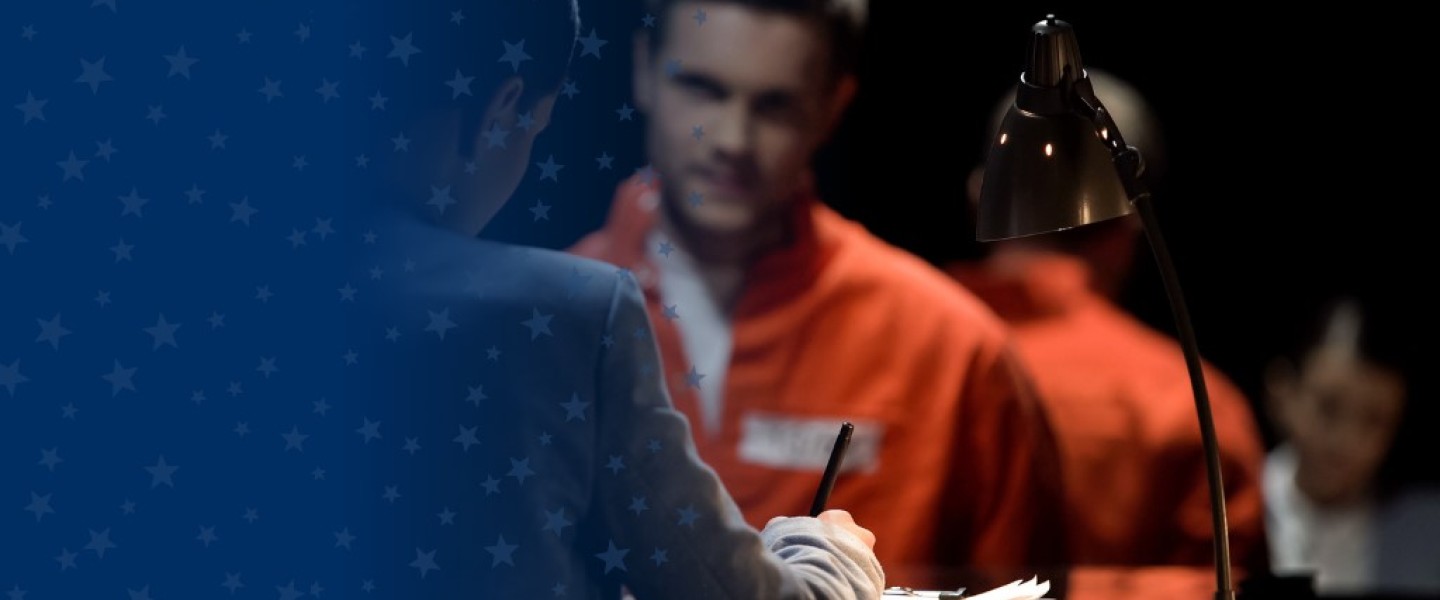As the criminal justice landscape continues to evolve, gaining a deep understanding of processes and principles of the field is crucial. Whether you are just beginning your educational journey or exploring specific areas of professional specialization, the insights offered below can help guide your decisions and shape your career in the legal sphere.
This article explores the system's goals and operational dynamics, diving even further into the criminal justice system's primary objectives to ensure public safety, administer justice, and rehabilitate offenders.
What Is the Purpose of the Criminal Justice System?
What is the criminal justice system, exactly, and what is its purpose? The criminal justice system serves a multifaceted role in society, primarily aimed at maintaining public order, ensuring justice, and upholding the rule of law. Its core purpose revolves around the prevention and punishment of criminal behavior, which is critical for the stability and safety of communities. Additionally, the system is responsible for rehabilitating offenders, offering them opportunities for reform and reintegration into society.
By balancing these goals, the criminal justice system strives to protect citizens, provide fair legal proceedings, and foster a safer environment for all. This fundamental understanding of purpose of the criminal justice system is essential for any student pursuing a career in related fields, as it shapes the framework within which they will operate professionally.
Protecting Society and Maintaining Order
The criminal justice system plays a central role in protecting society and maintaining order by ensuring that laws are enforced and justice is served as fairly as possible. It operates through three primary components that include law enforcement, the judiciary (courts), and corrections.
Law enforcement agencies take the initial step in this process by responding to and investigating crimes, thereby preventing criminal activities and ensuring public safety. The judiciary evaluates the evidence presented and administers justice by determining guilt and handing down sentences, while corrections facilities manage the rehabilitation and sometimes punishment of offenders. This structured approach helps maintain a stable and safe society, supporting the ultimate goal of the criminal justice system to protect the public and uphold the rule of law.
Ensuring Justice and Fair Treatment
The principle of ensuring justice and fair treatment within the criminal justice system revolves around the fundamental belief that everyone deserves equal treatment under the law. However, defining and achieving fairness is complex due to the diversity of viewpoints on what this actually entails and the numerous competing interests at play. According to an analysis in the Sociological Methods & Research (SMR) journal, the concept of fairness can often be controversial because it intersects with various societal factors such as gender and racial biases that influence legal outcomes. This can lead to discussions about whether equality of outcomes is achievable without compromising the equality of treatment, especially when statistical disparities suggest inherent biases in enforcement and sentencing.
In addition, initiatives like the Smart on Crime program launched by the Department of Justice exemplify efforts to tailor charges and sentencing to the specifics of each case, thus promoting fair treatment by avoiding excessive mandatory minimums for low-level, nonviolent offenses. These policy adjustments are part of broader efforts to make the justice system more equitable and effective, which also include enhancing the credibility of the system to maintain public trust.
Key Components of the Criminal Justice System
When answering the question, “What is the criminal justice system?” it is important to understand its main pillars. The criminal justice system in the United States is structured into three primary components that ensure the effective enforcement of laws and the administration of justice: law enforcement agencies, the court system, and corrections and rehabilitation services. Each component serves a unique function; law enforcement maintains public order, the court system adjudicates cases, and corrections and rehabilitation work to reintegrate offenders into society. Together, these elements uphold the rule of law and strive for a just society.
Law Enforcement Agencies
Law enforcement agencies are on the front lines, responsible for maintaining public order, enforcing laws, and preventing crime across local, state, and federal levels. This includes everything from routine patrols to criminal investigations and the apprehension of lawbreakers.
The Court System
The court system handles the adjudication process, where guilt or innocence is determined, and justice is served through fair and legal proceedings. This component is crucial for upholding the rule of law and administering justice equitably and efficiently.
Corrections and Rehabilitation Services
Lastly, corrections and rehabilitation services manage the aftermath of the court's decisions by overseeing the incarceration, rehabilitation, and reintegration of offenders. This segment of the criminal justice system plays a key role in attempting to reform offenders and prepare them for a return to society, aiming to reduce recidivism and enhance public safety.
The Process of the Criminal Justice System
The criminal justice process encompasses several stages, each critical in ensuring justice while balancing fairness and societal safety. So, what is the purpose of the criminal justice system when put into practice?
From the initial investigation and arrest to trial and sentencing, each phase plays a pivotal role in determining the outcome for the accused and the community. Post-sentencing efforts focus on rehabilitation and reintegration, striving to transform offenders into productive citizens. This systematic approach seeks to protect individual rights while maintaining public order—highlighting the complex interplay between law enforcement, judicial decisions, and correctional strategies.
Investigation and Arrest Procedures
This initial phase involves law enforcement agencies detecting and investigating criminal activities. Officers collect evidence, interview witnesses, and follow leads to apprehend suspects. Arrests are made based on probable cause that a person has committed a crime. This stage is crucial as it sets the groundwork for the legal process that follows.
Trial and Adjudication
During this stage, the court system takes center stage. The process begins with pre-trial motions and discovery, where both prosecution and defense exchange information and prepare their cases. Trials are then conducted, typically involving a judge and jury. The prosecution presents evidence to prove the defendant’s guilt beyond a reasonable doubt, while the defense aims to challenge this evidence and advocate for the defendant’s innocence. This phase culminates in a verdict, where the defendant is either found guilty or not guilty based on the evidence presented.
Sentencing and Punishment
If a defendant is convicted, the process moves to sentencing. Judges determine appropriate punishment based on the severity of the crime, the defendant’s prior criminal history, and the impact on the victims. Sentences can range from fines and community service to probation and incarceration, depending on the crime’s nature. This stage reflects the criminal justice system’s retributive and deterrent objectives.
Rehabilitation and Reintegration
Post-sentencing, the focus shifts to rehabilitation, especially for those incarcerated. Correctional facilities provide educational and vocational training, substance abuse programs, and mental health treatment aimed at addressing the root causes of criminal behavior. The goal is to prepare offenders for eventual reintegration into society, reducing the likelihood of reoffending and aiding in their transition back into the community.
Challenges Facing the Criminal Justice System
The criminal justice system faces a myriad of challenges that affect its efficiency and effectiveness. One significant issue is the growing concern over mass incarceration, which has led to overcrowded prisons and strained resources. This problem is compounded by the long-standing issues of racial disparities, where minorities are disproportionately represented in the system.
Additionally, there are challenges in ensuring fair treatment and due process in the face of public and political pressures, which sometimes prioritize quick results over thorough and fair procedures. Technological advancements—while beneficial in solving and preventing crimes—also bring new challenges related to cybercrime and digital evidence handling. In general, the system must continuously adapt to changes in laws and societal norms, requiring ongoing training and development for law enforcement and judicial personnel.
These challenges demand comprehensive reforms and innovative solutions to ensure the criminal justice system can effectively serve its foundational goal of administering justice while protecting society.
Issues of Racial and Socioeconomic Disparities
The criminal justice system is marked by significant racial and socioeconomic disparities that manifest at various stages, from policing practices to sentencing. These disparities disproportionately affect communities of color in the U.S., particularly African Americans, Latinos, and Native Americans. Research highlights that these groups often experience higher rates of poverty and live in areas with concentrated socioeconomic disadvantages, which correlates with higher rates of certain types of crimes, such as violent and property crimes.
This socioeconomic context contributes to a higher likelihood of encounters with the police and subsequent incarceration. Moreover, practices like "stop and frisk" and the enforcement of drug laws have been critiqued for their uneven application, often targeting these same communities disproportionately. This has led to higher arrest and incarceration rates among these populations compared to their white counterparts, exacerbating the cycle of inequality and injustice within the system.
The Debate Over Punishment vs. Rehabilitation
The discourse surrounding punishment and rehabilitation in the criminal justice system reflects a fundamental question about the goals of incarceration. On one hand, proponents of punishment argue that it serves as a deterrent to crime and a method of retributive justice, ensuring that offenders face consequences for their actions. This approach is often justified by the need for public safety and the moral imperative of retribution for victims and society at large.
Conversely, advocates for rehabilitation emphasize the potential for reform and the long-term benefits of reintegrating offenders into society as productive members. Rehabilitation programs focus on addressing the underlying issues that may lead to criminal behavior (such as substance abuse, mental health disorders, and lack of education or vocational skills). The goal here is to not only punish but also prevent future crimes through personal development and support.
This ongoing debate highlights the tension between these approaches and the broader implications for recidivism rates and societal safety. The effectiveness of either strategy can vary significantly, influenced by factors like the nature of the crime, the individual circumstances of the offender, and the resources available for either punitive or rehabilitative measures.
Careers in the Criminal Justice System
Clearly, the criminal justice system is complex, so it makes sense there exists a diverse array of career opportunities across its three main branches of law enforcement, the legal and court system, and corrections and rehabilitation. These sectors provide a variety of roles tailored to different skills and interests, from front-line officers to behind-the-scenes legal experts and rehabilitative staff.
For those passionate about making a tangible impact on their communities, the criminal justice field offers meaningful and challenging pathways to pursue. Whether ensuring public safety, delivering justice, or aiding in rehabilitation, these careers are essential to a functioning society.
Law Enforcement Careers
These roles, which include police officers and detectives, focus on enforcing laws, ensuring public safety, and responding to emergencies. Specialists like transit officers enforce security on public transport systems. The work often requires physical fitness, strong problem-solving skills, and the ability to handle stressful situations.
Legal and Court System Careers
This sector features roles such as lawyers who advocate for clients, judges who ensure the fairness of trials, and court clerks who manage the flow of cases. These positions require strong analytical abilities, knowledge of the law, and the capacity to handle intricate legal processes.
Corrections and Rehabilitation Careers
In this area, professionals like correctional officers oversee incarcerated individuals, while rehabilitation specialists work on reformative programs aimed at reducing recidivism. This field requires strong interpersonal skills and a commitment to ethical standards.
Pursue Your Career in Criminal Justice Today
As you consider your future in the criminal justice field, University of the Cumberlands offers comprehensive degree programs designed to empower aspiring professionals. No matter if you're starting with a Bachelor of Criminal Justice, advancing with our online Criminal Justice Management Certification, or looking to master complex leadership roles with our online Master of Science in Criminal Justice Administration (MJA), we help equip students with the tools and expertise they need to excel.
Apply today to level up your career prospects and join an academic community committed to justice and excellence.

